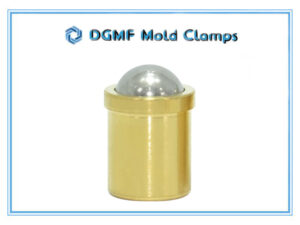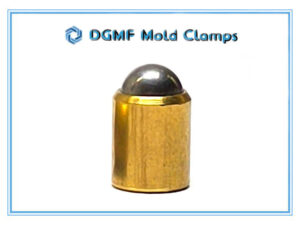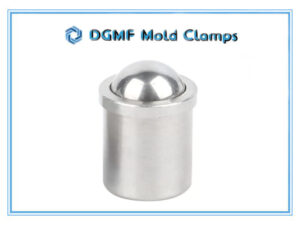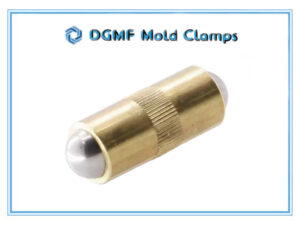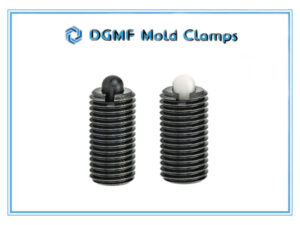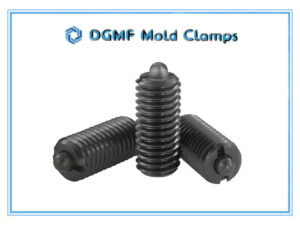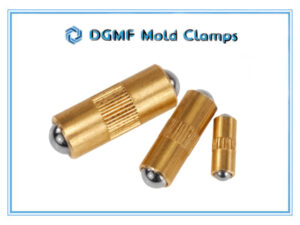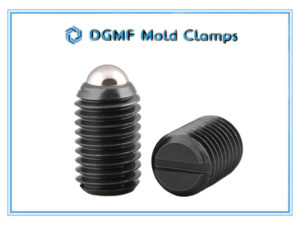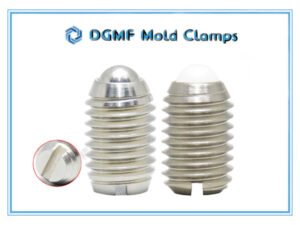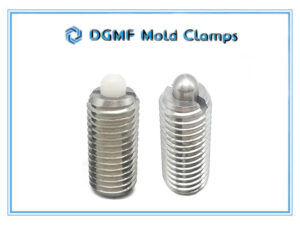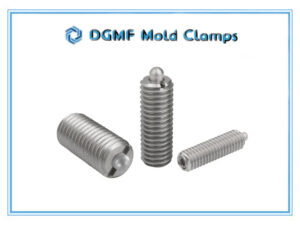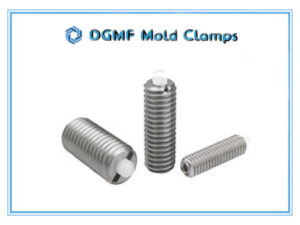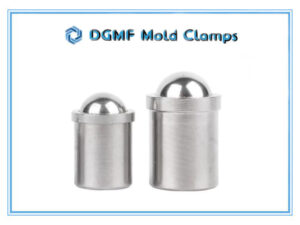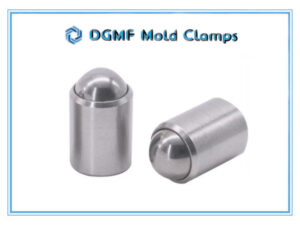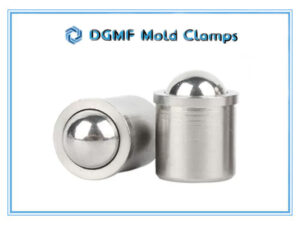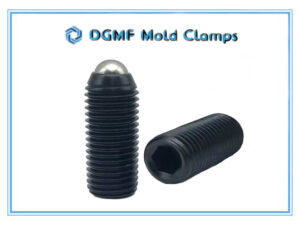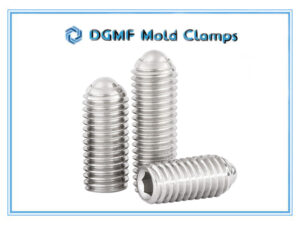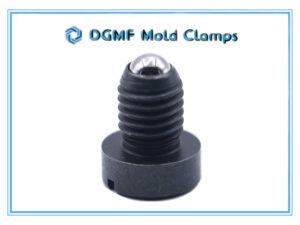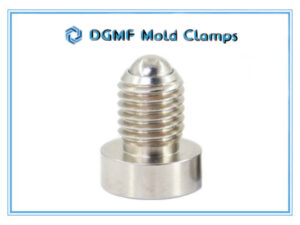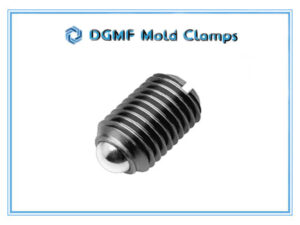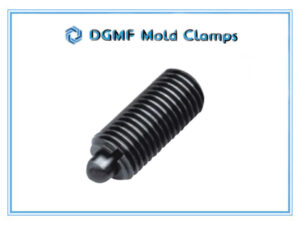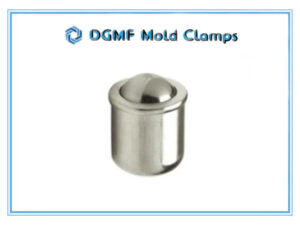- +86 173 2211 0281
- info@moldclamps.net
- Mon - Sat: 9:00 - 18:30
Spring Plungers
What Are Spring Plungers?
The spring plungers also known as ball plungers or spring ball plungers, are used as ejectors, for push-on/push-off applications in the sheet metal industry, as well as for cushioners.
How is a spring ball plunger constructed?
A spring plunger is a kind of loading device composed of a shell, spring, ball plunger, or plunger.
Where Are Spring Plungers Used?
Spring plungers are widely used in medical equipment, lubrication equipment, fasteners for the mechanical industry, pneumatic tools, and other products.
Engineers often use it in molds, fixtures, assembly, and other work. With the help of a certain pressure of the spring to promote the movement of the ball, so that the smooth operation of the equipment.
How to Install Spring Ball Plungers?
Spring plungers are the best spare parts for all kinds of machinery and are widely used in the machinery industry. In molds or mechanical equipment that require the installation of springs, how to accurately and easily install a bare spring alone is a problem for engineers, and the installation efficiency and results are often frustrating.
After the layout, the installation of springs and equipment is very difficult to control. Bare springs can randomly fly around when stressed. And some devices simply can’t run on a bare spring alone. The positioning bead can eliminate the above problems.
Spring ball plungers provide precise end pressure and are easy to install. By minimizing the thickness of the bushing pinhead, the spring can be as long as possible. By standardizing the projection height of the ball head, the fatigue of the spring is of course reduced and its service life is increased.
What Styles of Spring Plungers Are Available?
Spring plungers, which provide pressure and accurate positioning, are fixed in a variety of ways, roughly in the form of press-fit and thread-locking types.
Spring plunger beads are available in full-round and half-round, threaded, and light body.
What Kind of Materials Are Available for Spring Plungers?
Threaded housings are available in carbon steel. Alloy steel. Stainless steel. Threaded with a groove and hexagonal two locking methods, press the shell of stainless steel and plastic two. The column has a long, short, standard type to adapt to the pressure and fixed body.
The ball material has hardened steel or stainless steel, and can also use man-made materials such as nylon, polyresin (poly spring device), or phenolic resin.
These materials provide high strength and durability with sufficient elasticity, depending on the requirements of the material to be stressed, such as soft metal materials, the use of a nylon ball head is necessary.
Installation Tips for Spring Ball Plungers
While installation can be done with a screwdriver or Allen wrench, most experts recommend using a specialized spring-loaded plunger wrench, especially for novices. Using the wrong tool risks over-compressing the spring and damaging it.
As any technician knows, you should always work with the right tool. The biggest danger when installing is using too much torque on the plunger spring.
While they are like bolts or screws, their bodies are hollow and there is a limit to the amount of force they can tolerate.
Spring Ball Plunger Series:
Kipp Standard: K0309, K0310, K0311, K0312, K0313, K0314, K0315, K0316, K0317, K0318, K0319, K0320, K0333, K0334, K0336, K0337, K0609, K0610, K1370, K1379, K1381, etc.
Ganter Standard: Styles of GN 614, GN 615, GN 616, GN 815, etc.
Hasco Standard: Z36, Z361, Z37, Z370, Z372, Z374, Z375, etc.
If you cannot find the needed one, please contact us for it.
DGMF Mold Clamps Co., Ltd supplies all kinds of spring plungers along with mold clamps, components, and machine tools for the industries.
Contact the DGMF Mold Clamps Co., Ltd sales team for spring ball plunger specifications, spring plunger pricing, and ball plunger inventory.
Or other components, parts, elements, or tools you may want.
Showing all 22 results
-
DGMF Brass Short Press-Fit Ball Plunger Smooth, With Collar and Ball
Read more -
DGMF Brass Spring Plunger Smooth With Ball No Collar
Read more -
DGMF GN 614-NI Stainless Steel Spring Plunger
Read more -
DGMF GN 614.2 Double-Ended Spring Plunger
Read more -
DGMF GN 616 Spring Plunger Bolt-type
Read more -
DGMF K0317 Threaded Spring Plunger
Read more -
DGMF K0337 Double-Sided Spring Plunger
Read more -
DGMF Spring Plunger With Ball And Slot
Read more -
DGMF Spring Plunger With Slot Stainless Steel
Read more -
DGMF SS GN 616 Bolt Spring Plunger
Read more -
DGMF SS K0319 Threaded Spring Plunger
Read more -
DGMF SS K0320 Threaded Spring Plunger POM Trust PIN
Read more -
DGMF SS K0333 Spring Plungers Smooth Version
Read more -
DGMF Stainless Steel Spring Ball Plunger Without Callar Smooth Version
Read more -
DGMF Stainless Steel Spring Plunger Smooth With Collar And Ball
Read more -
DGMF Threaded Ball Spring Plunger Hex Socket
Read more -
DGMF Threaded Spring Plunger Stainless Steel Hex Socket
Read more -
DGMF Z36 Ball Plunger With Slotted Flat Head
Read more -
DGMF Z361 Ball Plunger With Slotted Flat Head
Read more -
DGMF Z37 Spring Plunger Threaded With Screw Driver Slot
Read more -
DGMF Z372 Spring Plunger Threaded Ball Catch
Read more -
DGMF Z374 Spring Plunger Non-Thread
Read more

